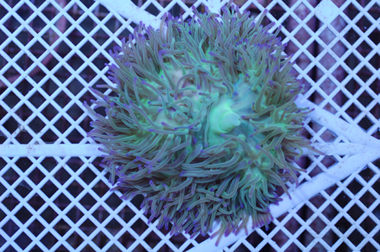
Over the last sixteen years the movements on Bongoyo inside reef appear to be linked to seasonal changes between the North East Monsoon and the South East Monsoon and may relate to a drop off in current caused by the changes in prevailing winds. This provides for protection against predators as can be seen in the images below. They move often along the shallow reefs in Tanzania by absorbing water and rolling up into a ball with the tentacles on the outside. To date only noted in the shallows on reef tops, but they have been noted in aggregations of several hundred in the Red Sea. In Tanzania groups of thirty to forty are not uncommon in a relatively small area. Magnificent anemone are often found in large aggregations in Tanzania and in the Red Sea. While the anemone landing on the bommie and attaching probably has a large element of randomness in it, the Skunk clowns themselves possibly have a method of sensing anemones from a fair distance. The nearest population of the anemones and the Skunk clowns is some 3.5 nautical miles away. It is common to see large numbers of smaller individuals alongside each other in the shallows.Īt the Yacht club in Dar es Salaam there is a small coral bommie which for years had no anemones on it but in 2014 a single anemone suddenly appeared on it and a few days later a pair of Skunk clowns ( Amphiprion akallopisos) were resident. The larger anemones are generally seen in deeper water in Tanzania, often with one or two in a small area but they are more often seen singly.


The magnificent sea anemone prefers hard flat substrates that are well exposed to light and with lots of current and is generally found from 1 meter to 20 meters in depth. Occasionally they are seen deeper around 27 meters but they are most common from 2 meters to 18 meters.


 0 kommentar(er)
0 kommentar(er)
